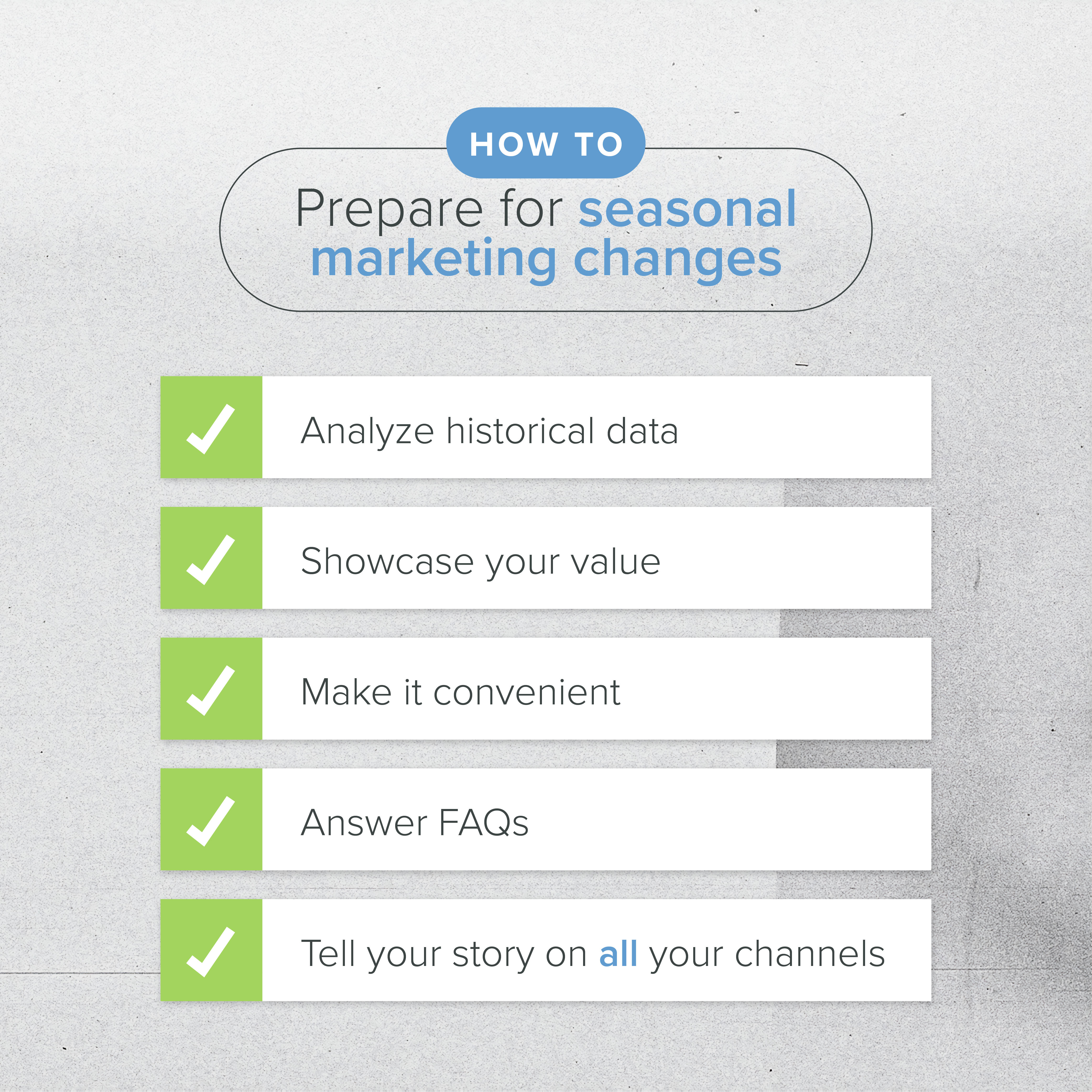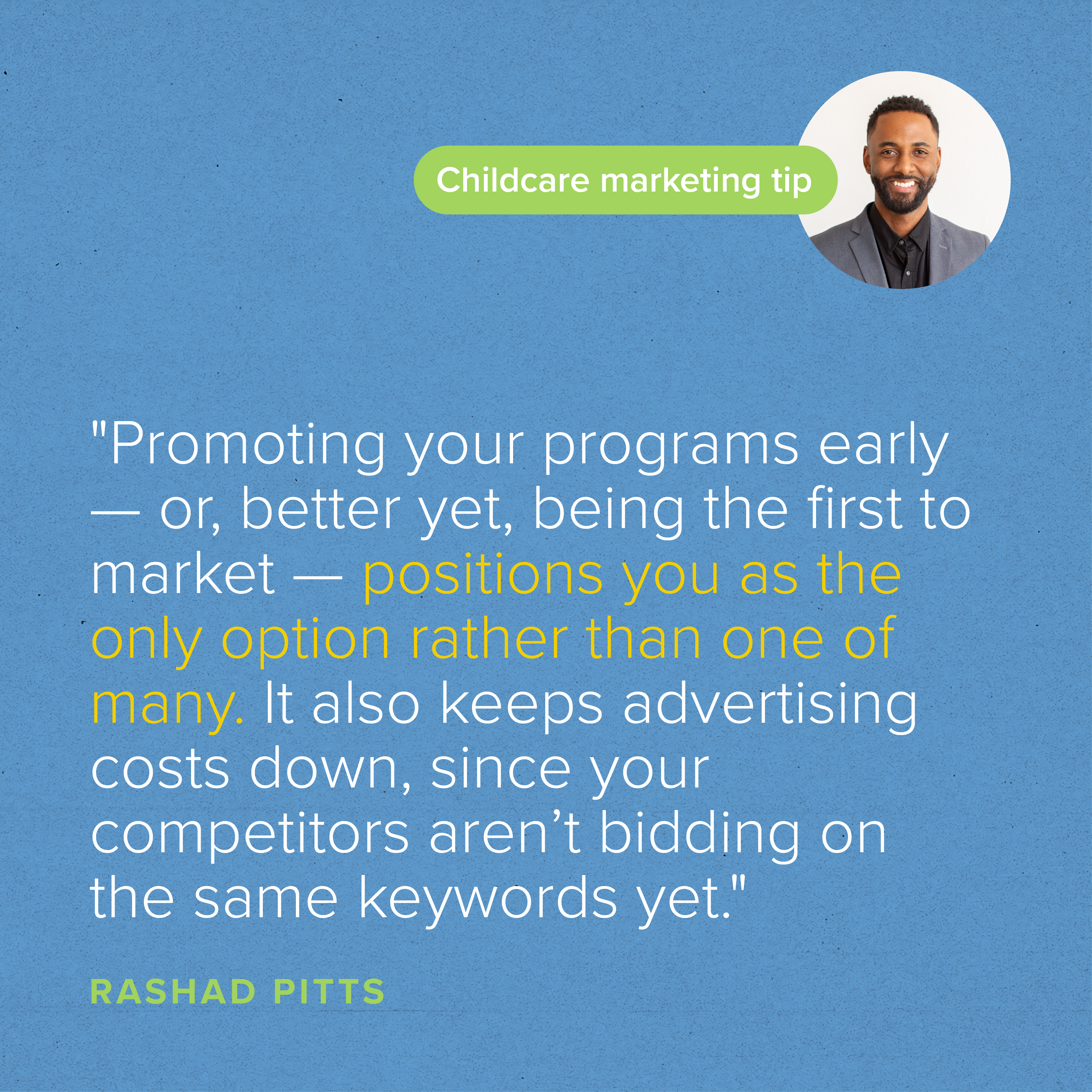You’re likely already familiar with the three main “seasons” in the childcare industry: Summer Camp, Back to School, and the Holiday season.
These are interspersed with occasional school break weeks (e.g., spring break) when parents may visit or schedule tours, but the three main seasons are what drive most of your annual enrollment.
Advertising for Summer Camp season should begin primarily in Q1, in February and March. By Q2, you should have good traction and, hopefully, a waitlist.
For children in kindergarten and above, Back to School ramps up in August and September. And preschool enrollment is year-round.
The Holiday season kicks off in November and continues through December. During this time, parents are reconsidering annual commitments and thinking critically about their child’s school. This is an opportunity for you to get in front of those parents.
But how do you do that? Better yet, why advertise to parents so early?
Today, we’ll explain how to prepare your childcare center for these three seasons and why proactive preparation is essential for a thriving business.
Why Advanced Preparation Is Important
Proactiveness is the key to security. Being proactive lets you know you’re in a comfortable spot regarding enrollment capacity well in advance. This helps you plan ahead for staff, capacity, classroom sizes, and hiring more teachers if needed.
Promoting your programs early — or, better yet, being the first to market — gives you a competitive advantage. It positions you as the only option rather than one of many. It also keeps advertising costs down; for example, regarding Google Ads, your competitors aren’t bidding on the same keywords yet.
So, from both an organic traffic and a paid ads perspective, being proactive in your marketing approach is advantageous. Don’t be late to the party. Arriving early will give you the luxury to adjust as you move forward.

The Best Ways to Prepare
There are five ways to best prepare for seasonal changes in the childcare field. Let’s go through each step by step.
Analyze Historical Data
In today’s world, we have free access to loads of digital information. Data tells a story, and the first step in your proactive journey is to read that story.
Years ago, we played marketing strategies by ear and hoped for the best. Now, we can track when parents call and when traffic increases on our website’s Summer Camp or After School page. These bits of data strengthen your ability to anticipate trends and be proactive.
Showcase Your Value
Don’t just advertise this year’s enrollment and start dates. Update your website copy and publish content in a way that highlights your competitive advantages and your differentiators.
For example, why should parents choose your school over another? What benefit are you offering them and their children?
Mention your curriculum, culture, and ways you keep students engaged, such as unique field trips and activities. Emphasize points that create peace of mind for parents — your staff’s expertise, your school’s focus on safety and security, and why parents can, should, and do trust you with their children.
Make It Convenient
If a parent is comparing two websites and one has fewer hoops to jump through, which company do you think they’ll contact first?
Whatever action you want prospective clients to take when they visit your site, make sure it’s clear and straightforward — signing up, scheduling a tour, joining a waitlist, etc. Your call to action also must be mobile-friendly.
Answer FAQs
There are likely several questions your front desk staff and teachers answer multiple times per day. Have them document these questions and aggregate a list of them. Then, post those FAQs on your site in a designated FAQ section, or as a social media promotion.
Creating a list of FAQs not only proactively answers questions for prospective clients, but it saves time for your staff during tours and school hours. Showcasing your school’s authority and expertise is one more way to proactively offer parents peace of mind.
Tell Your Story on ALL Your Channels
Don’t be a one-legged stool. Instead, understand that you need multiple platforms and approaches to build a solid foundation for your business.
Know your audience and know your value. Don’t just update your seasonal program’s landing page details — that’s not enough. Your digital footprint is greater than your website.
Meet your audience where they are. They aren’t only looking at your website, so promote across all channels: social media (Twitter, Facebook, Instagram, etc.), Google Business Listing, childcare-specific directories, digital advertising, etc.
Your social media posts can highlight the value of registering for programs early. Your Google Business Listing should have updated dates and times for seasonal programs listed. All seasonal information on your website should be correct.
Final Thoughts
Position your school as the best (and only) choice by meeting your audience where they are and being proactive in filling their needs. Doing this every season is how you’ll run a successful childcare business and maintain consistent enrollment with waitlists.
If you feel you could use a hand in the process, or with any step of your digital marketing journey, we’re here to help. Contact us today. We’ll be happy to see what we can do for you!

Subscribe
Sign up with your email address to receive news and updates.

